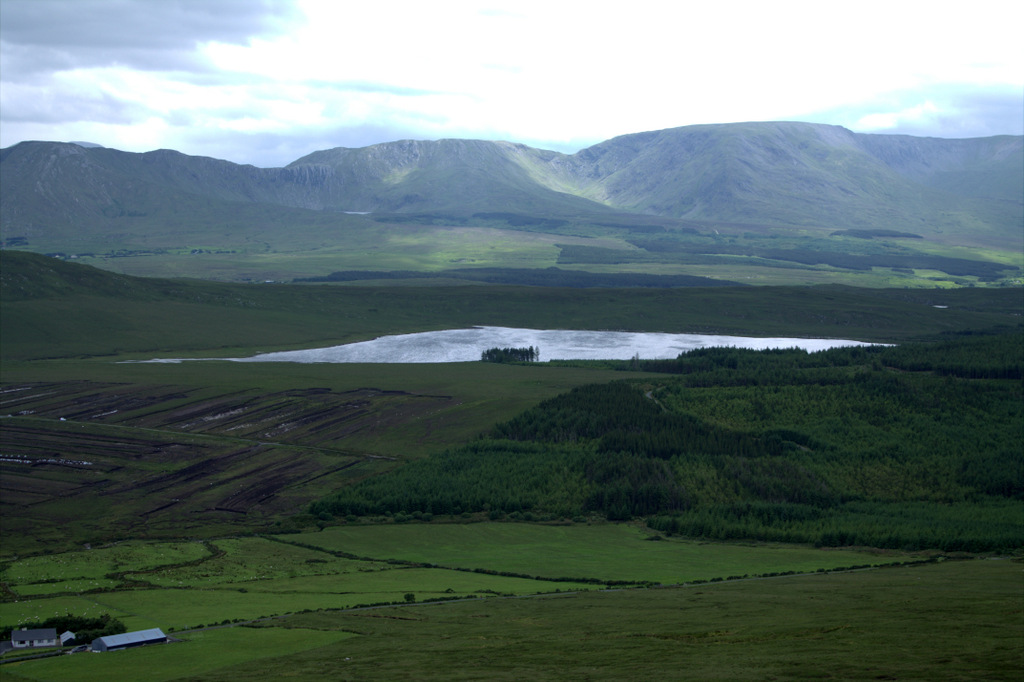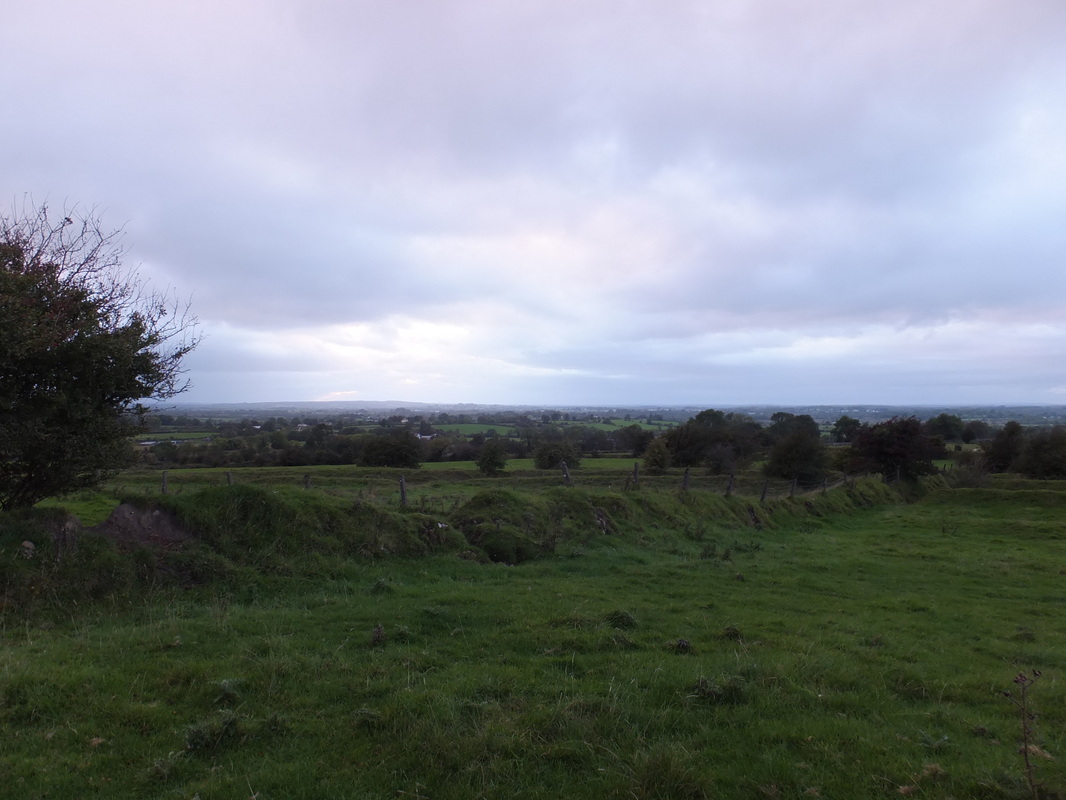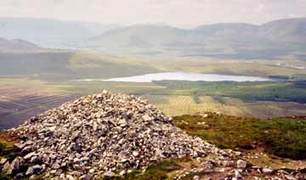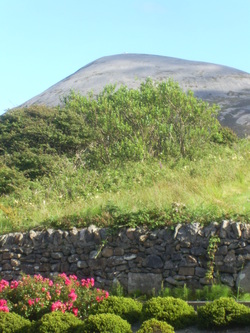But the advice for anyone seeking connection to the Celtic Gods is to avoid the current catholic calendar of the so-called civilised world to time your ceremony. Pagans and Druids on a Celtic Path use Natural Time as their ancestors did – this means working with the alignments of the oldest temples to the four bright stars in the belt of the Zodiac. The Solstices and Equinoxes do not line up with particular Stars, they are turning points of the day / night balance such as when the Sun’s energy enters the ancient temple at Brú na Boinne (Newgrange) energising the God Dagda after the longest night of the year. The history and correct timing methods are shared below for those who wish to walk a Celtic Path.
Celtic Druid’s Summer Sun Standing
Solstice is from the Latin and is made up from two words given roughly as: sol = sun and stice = stopped. Celtic Druí do not believe that the Sun stops so we use the old Irish word “Tairisem” which means standing still. In summer this Sun Standing happens in the month of June around the 20th, 21st or 22nd when we honour Éatain Eachraidhe, the White Mare Goddess. This is the highest point of the solar year when the Sun reaches it maximum height in the Sky. The Sun is at its highest at noon and shadows are at their shortest. There are almost 20 hours of daylight and only four hours of darkness if you are in Ireland at this time.
This is not a specifically Gaelic holiday and many Pagan cultures celebrate this time with many festivals known by a range of names - Denmark, Sankt Hans Aften. Wiccan sabbat Litha. Slavonia, St. John's Night. Alban Heruin. Gaul (old France), Feast of Epona, (white mare goddess). Roman Empire, Vestalia. Catholic countries: feast of St. John the Baptist – this was an attempt to shift the natives away for the true date by setting the 24th of June as bone fire night. Hopi Indians and Native Americans celebrate the summer solstice but I don’t know their names for this day.
Etain, White Mare Celtic Goddess, Crom agus Corra
In Ireland, many people of all ages and religions do some sort of celebration for this day. The resurgence of the old Pagan ways and the need to believe in something truly spiritual for this day has many people visit the ancient sacred sites. We at Ireland’s Druidschool often hold a presence on Tara and we have multiple ceremonies. Our sunrise ceremony is very simple - we just stand or sit in silence facing the horizon where the sun will actually rise. We watch the clouds, the colours and the rising of the false sun and then the actual sun, and then the actual sun merge into the false sun. Magically - this is spirit rising within.
This longest day is sacred to the White Mare Goddess, who was known in Wales as Rhiannon, in France as Epona and here in Ireland She is called Éatain Eachraidhe (sometimes also spelt Edaín). In the recent destruction of the sacred valley in the Royal City of Tara the remains of a high status female (with horse and giant dog found nearby) was kept totally under media wraps. The high status female is wrapped in black plastic and stored in a warehouse in Drogheda. But Her spirit has returned to native consciousness and once again Éatain, the White Mare Goddess, is honoured with ceremony on Tara on the longest day of the year.
We also watch the Sun rise from Tallaght Hill as the sun aligns with Lambay Volcano, the Pond called Linn Oir and then to the Cairn on the Hill of the Fair Gods. Much is written about this alignment in this website - words cannot describe the thrill of being at a complex of sacred sites that were laid out to work with the energies on this specific day.
We also hold Pilgrimage to Croagh Crom, Ireland's Holy Mountain (aka the Reek). Just south of the holy mountain is a triangular lake called Loughnacorra – this should read – Lough na Corra which translates as the Lake of the Crane Birds. At midday the Sun is reflected from the surface of Lough na Corra onto Croagh Crom and a powerful connection is made. This is the harmony of balance between God and Goddess expressed in the landscape. More info on this Sacred Pilgrimage is available here.
Calculating the Summer Solstice
In the Celtic World and in the time before it - there were no clocks; no calendars and the festivals of the year were measured in Ireland by the penetration of a sunbeam into designed passages in stone Cairns (such as Newgrange) to exactly light up a section of a stone with carvings upon it. This happens even today so the ancestral calendar is 100% accurate. The longest day is calculated by the midday Sun casting its shortest shadow. But the Sunrise on the longest day makes an alignment over Lambay Volcano to a little known monument complex on Tallaght Hill in South Dublin. Even though the Cairn on Tallaght Hill is in ruins - the outer circle of recumbent stones from the Cairn still exists. This means if you were to stand on top of this Cairn on Tallaght Hill when the Sun rises at 0* of Cancer 45* east of north (midsummer) you would see the sun rise over the Lambay Volcano and light up a pond to glow golden before it shines in to the foundations of a ancient ceremonial temple on Cnockan (or the Little Hill) as the locals call it. The old maps give the name of Cnockan as Knockavinidee. A scholar from a nearby valley has given us a translation as “The Hill of the Fair Gods”. This is the ancestors Summer equivalent to Newgrange / Brú na Boinne.
God, Goddess and the Four Archangels
This longest day is sacred to the White Mare Goddess, who was known in Ireland as Éatain Eachraidhe. This was the Iron Age expression of the goddess, in the preceding age the goddess was honoured as the White Cow or Boann / Boyne the sacred river that flows before Knowth, Newgrange and Dowth.
When the Sun and Moon were not visible the time of the seasons and the time of night could be obtained by looking to the bright star in the night sky. This placed the four bright stars next to God and Goddess in order of importance. These four bright stars form an almost equal armed cross within the circle or belt of stars we call the Zodiac. But at the Summer Solstice it was easy to know that it was the longest day because there were only 4 hours of darkness. This is the ancestors timing for the Summer Solstice and it is a glorious archaeo-astronomical feat of Sun light engineering bringing the energies of God to Earth. The Sun, Lambay Volcano, the passage Cairn presumably with its carved stone inside all make an alignment stretching many millions of miles once a year and this shows the correct timing for Summer Solstice.
The Summer Solstice is not aligned to a Star
In its most basic - there were no clocks, no calendars and the passage of time was measured in Ireland by the penetration of a sunbeam into designed passages in stone cairns to exactly light up a section of a stone with carvings upon it. This happens even today so the ancestral calendar is still accurate. The solar alignment that determines the correct time for the Summer Solstice is the most northerly rising of the Sun. The double check is that the Sun reaches its highest at midday and casts the shortest shadows. The temple that catches the Sunrise on the longest day is on Tallaght Hill which overlooks Dublin and Lambay Volcano but all that remains is the base of a Cairn. From Tallaght Hill you can look to Cnoc Lugh, Summerhill, Sliabh na Callighe, Tara and Brú na Boinne without obstruction – a pure line of sight. This was important as fires can be seen, signals sent and communication between districts were made easy, but more importantly in my opinion – the entire Eightfold year and its Cairn Temples pivoting on Lambay Volcano in Dublin Bay all worked to sustain the Earth’s Magnetic Field and they were visually linked.
In Limerick on the west coast of Ireland we find Grange, the largest stone circle in the country. It is over 150 feet in diameter and has 113 stones and was built over 4000 years ago. It makes an almost perfect circle of stones surrounded by a high earthen bank, making it into a Henge. It is aligned with the rising sun on the Sunrise of the Summer Solstice -the sun shines directly in the centre of the ancient stone henge circle. Hundreds would gather here and today people are returning and the numbers increase each year.
In England the focus is at Stonehenge where a huge multiple standing stone circle makes a perfect alignment with the rising sun on the Solstice. This has become a hugely popular event for many people from all over the world.
Earth’s magnetic field
This is one of Eightfolds of the Solar Year of the Tuatha De Danann. Samhain and Imbolg share the same alignment to Cairn ‘L’ on Sliabh na Callighe, Beltine and Lughnasa share the same alignment to Cnoc Lugh (Lyons Hill), the two Equinoxes share the same alignment to Summerhill, the Summer Solstice has its own alignment to the Hill of the Fair Gods on Tallaght Hill and the Winter Solstice has its own alignment to Brú na Boinne or Newgrange. All these alignments for the Eightfold Solar year have the fulcrum or pivotal point of the leaking energies from the volcano being wrapped back into the solar wind. This is earth magnetism and landscape healing at an extraordinary level. In magical terminology – this is the Solar Word wrapping the Volcanic leaking energy into itself as it connects to the acupuncture of the stone Cairns – activating and harmonising the magnetic grid here on Earth.
At the Celtic Druid Temple, we will guide you to find and express your Celtic Spirit by helping you discover the Three Realms, Three Cauldrons and Natural Time - this creates a strong foundation for becoming a Celtic Druid. We train students and pathworkers from all over the world who seek to know and express Sacred Knowledge and Indigenous Spiritual Traditions so that many seekers can walk a distinctly Celtic Druid Path.


























 RSS Feed
RSS Feed